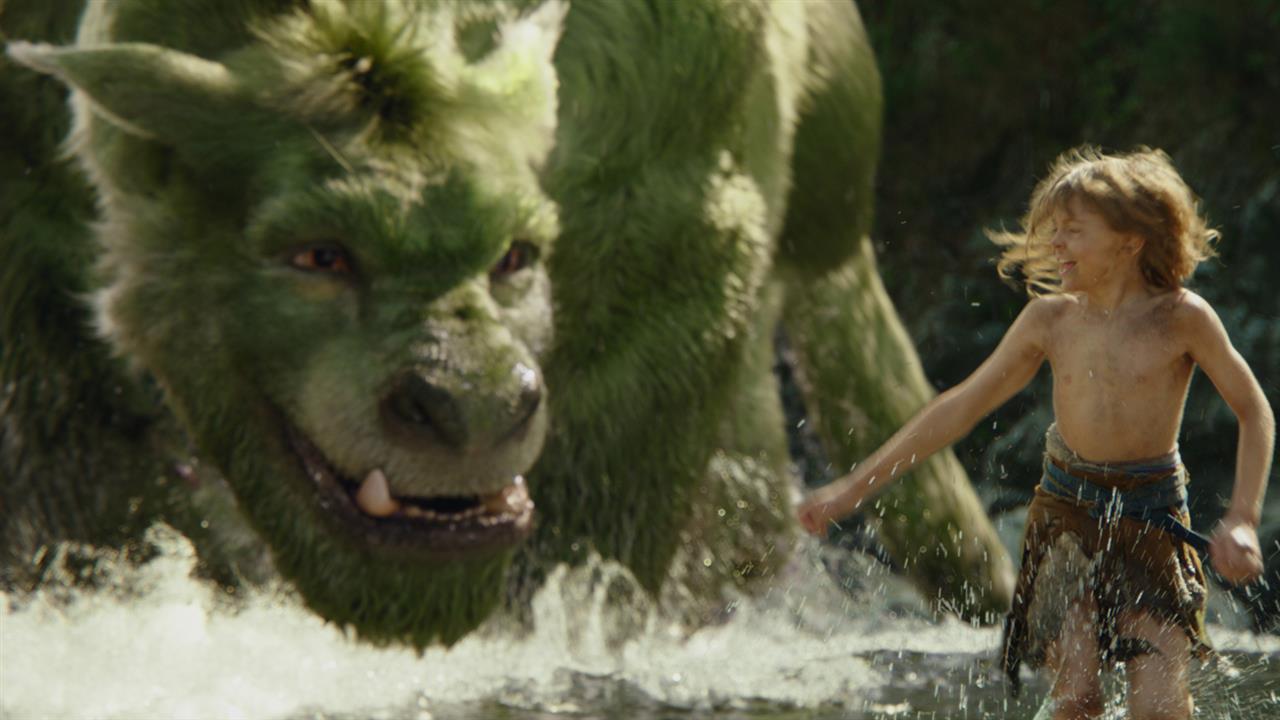My nominee for the most inexplicably overlooked film of 2016, or at least one of the more under-discussed, Pete’s Dragon is that rarest of things: a movie that captures the very feeling of childhood without pandering or talking down to its audience. Full of verdant landscapes, gracefully incorporated CGI, moments of actual fear and wonder, and an overarching message of outsider solidarity, it’s a kid’s movie for anyone who’s ever been a kid.
The story, adapted from the equally undiscussed 1977 Disney animated feature of the same name, concerns an orphaned boy who (you guessed it) adopts a dragon. Or, really, the other way around. Director David Lowery (Ain’t Them Bodies Saints, editor of Upstream Color) juggles tones and nuances, as young Pete moves from the terror of his parents’ death to his bonding with an unlikely friend, protector, and surrogate father, a green, fire-breathing cuddle monster he names Elliott.

Taking place in the Pacific Northwest but looking unmistakably like New Zealand, Pete’s Dragon is a live-action fairy tale as animated by the landscape as the increasingly adorable relationship between two characters who’ve found in each other a safe haven from a hostile world.
If it feels dreamlike, that’s because it is: redwoods tower overhead, cliffs loom, dragons exist. It’s a child’s-eye view of experience — the world of Pete’s Dragon is majestic and much bigger than our small protagonist, with light filtering through the trees and danger around every corner. It’s frightening because of that, but also filled with possibility. In a typically astute piece, Charles Bramesco writes, “Every facet of [cinematographer Bojan] Bazelli’s camerawork aims to go easy on the eyes. He eschews the teal-orange color scheme that’s dominated so many recent studio projects and instead traffics in earth tones, conjuring a lushness and sense of calm through greens, browns, and grays that show the crucial difference between ‘dull’ and ‘washed out.'”

Lowery’s telling wisely drops the original’s musical numbers, delivering an honest treatment that takes the events at face value and works from there. Pete’s Dragon is an extremely difficult movie to dislike, probably for this exact reason. Its heart is on its sleeve, or possibly its wings.
The rest of the story contrasts the ways in which the rest of the adult world responds to their discovery of the feral boy and his magical friend. Those responses are not always positive, rooted in a kind of xenophobia and also a King Kong-inflected greed. The performances are almost sincere to a fault, but not quite. This is, after all, a movie about a wild child and a flying mythological beast. Some sort of method acting or harshness would be at odds with the story the film is telling. We’re in the realm of dream and fantasy, and Pete’s Dragon has the intelligence and artistry to allow these to speak for themselves.
Robert Redford plays a key role as the one true believer, channeling all his grizzly gravitas in service of the sweetness at the film’s center. But this is, above and beyond everything else, a remarkably accomplished, visually stunning, and utterly uncynical take on familiar tropes.
If Pete’s Dragon didn’t get all the attention it deserved last year, I predict that will change in the years to come. Like Elliott, it’s still out there, patient and lovely, waiting for a new generation of kids, and kids-at-heart, to discover it for themselves.
(Streaming on Netflix)
Quick Links

Never released in the U.S., this Darius Khondji-shot, Alexandre Desplat-scored romance is a manic MASH-note to Paris, and it is almost in danger of toppling over from its own charm. Filmed with virtually no money, and certainly no permits, Marie-Louise opens with a frank acknowledgement of its “American girl in Paris” cliche, then proceeds to upend it with some clear-eyed inclusions of class dynamics and sexual anxiety. But, for the most part, it just barrels through the French capital, driven by an infectious kind of reckless whimsy. Not for everyone, but you probably know who you are.
(Streaming on Le Cinema Club through 3/19)

When my girlfriend Carrie and I watched an entire bracket of sports movies last year, Big Fan was an unexpected moment of shared appreciation. Razor-sharp and pitch-black, Robert Siegel’s film is queasily funny and deeply sad, with an impressive Patton Oswalt anchoring its interrogation of sports fandom and the idiotic things we invest with meaning just to get by. Watch it today, and get ready for our next foray into the world of competitive sports-movie-watching, arriving on this very site shortly.
(Streaming on Amazon Prime)
Detour

Shot in less than two weeks and for under $100,000, Detour is some grimy shit, the noiriest of films. It’s also off-handedly brilliant and a tribute to what you can pull off with some basic sets, a couple of strong performances, and an absolute conviction that the world is going to hell.
A Girl Walks Home Alone At Night

When I reviewed Ana Lily Amirpour’s debut on its release, I said:
Its tagline could’ve included a range of other influences: noir, especially, the early 80’s indie sensibilities of Jim Jarmusch, occasionally the uncanniness of Lynch. If it sometimes comes across as too much of a formalist exercise, its sheer audacity takes it a long way. I’m not sure the world realized it needed a moody, noirish black and white vampire Western in Persian, but Amirpour knew better.
On a subsequent rewatch, the only thing I’d change is the qualification about it being a formalist exercise. There’s a weird kind of heart beating inside the film that only reveals itself after you get over the striking images. With her newest film — the “cannibal love story” The Bad Batch — set for release this June, maybe now’s the time to give this one another look.
(Streaming on Netflix)

